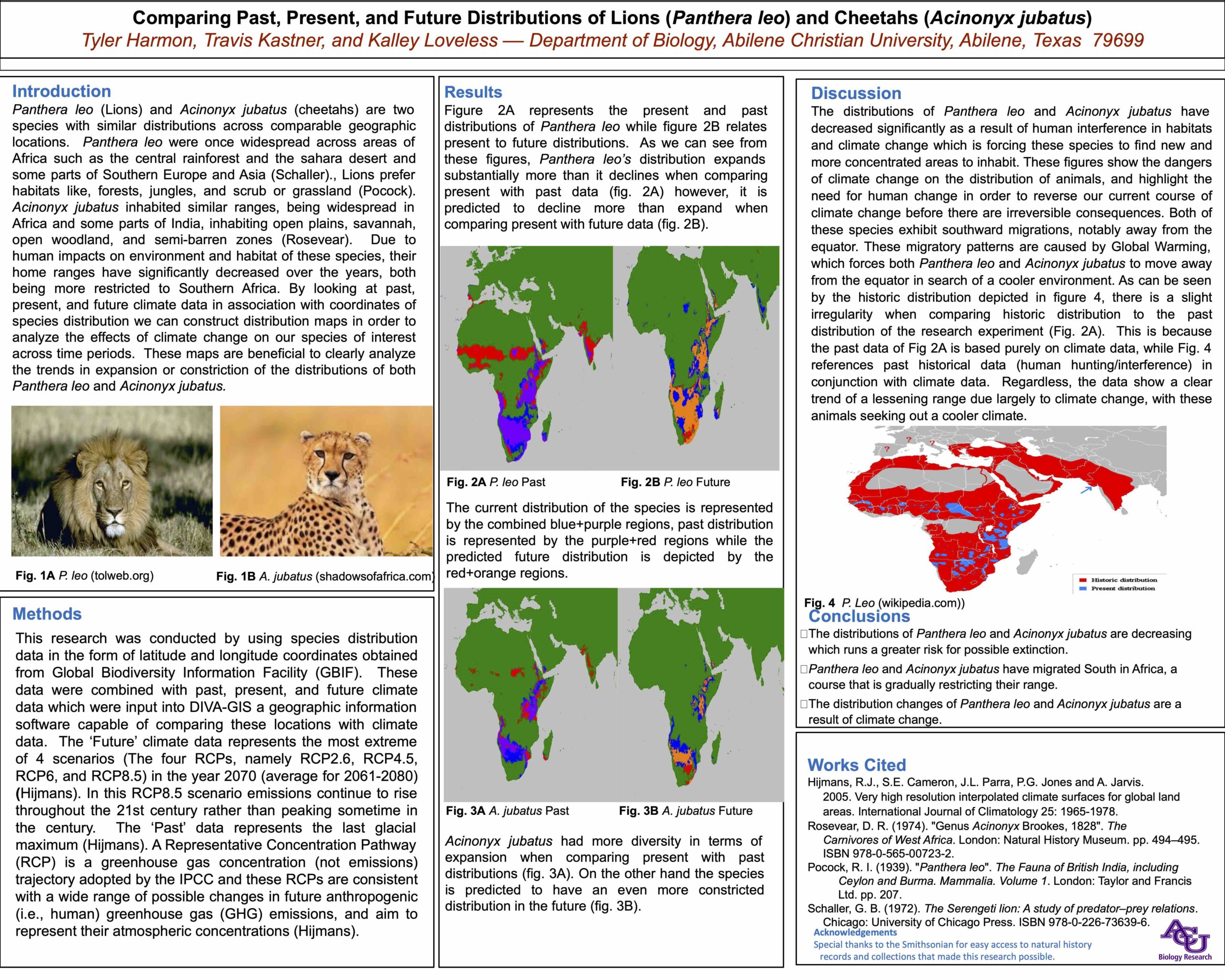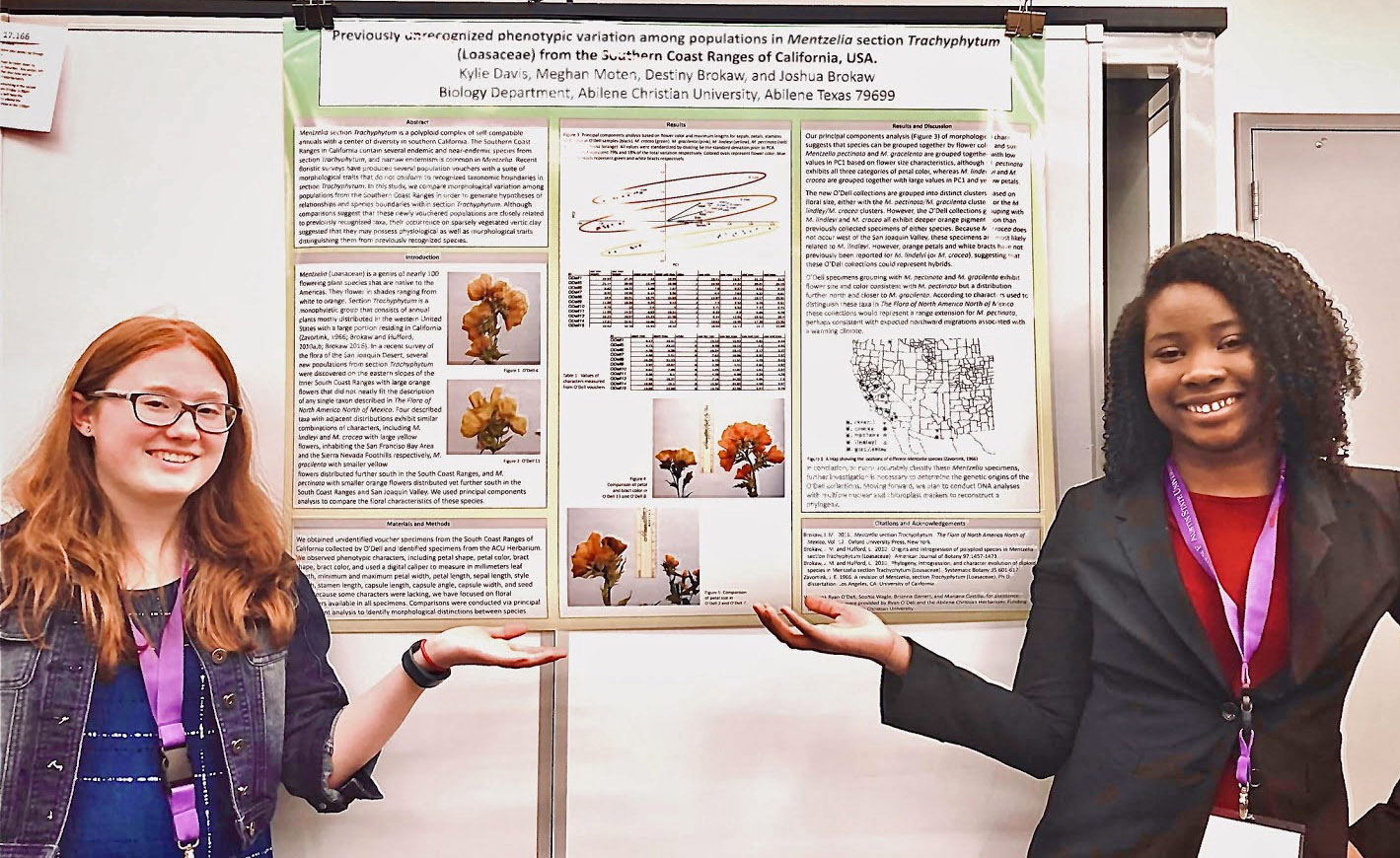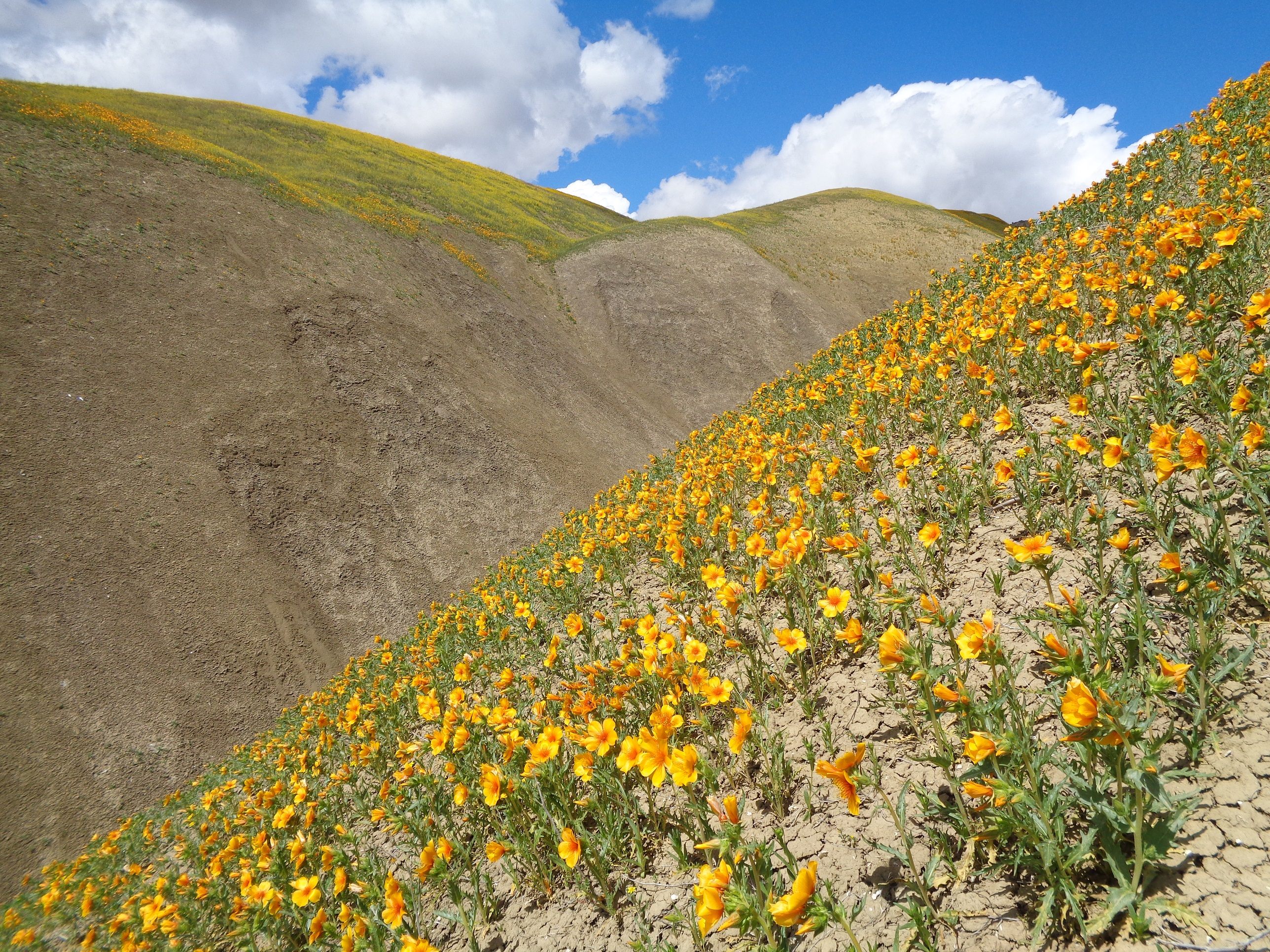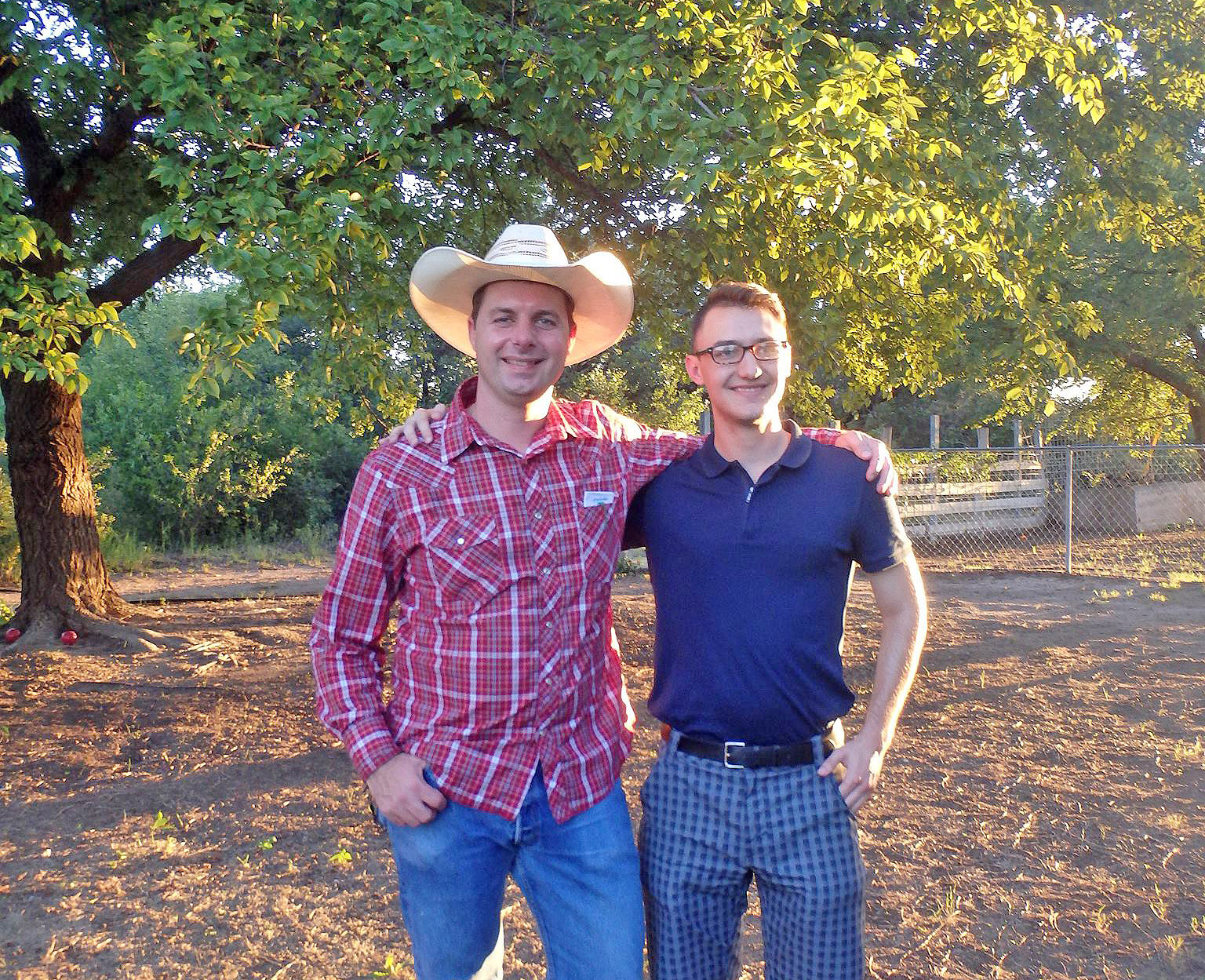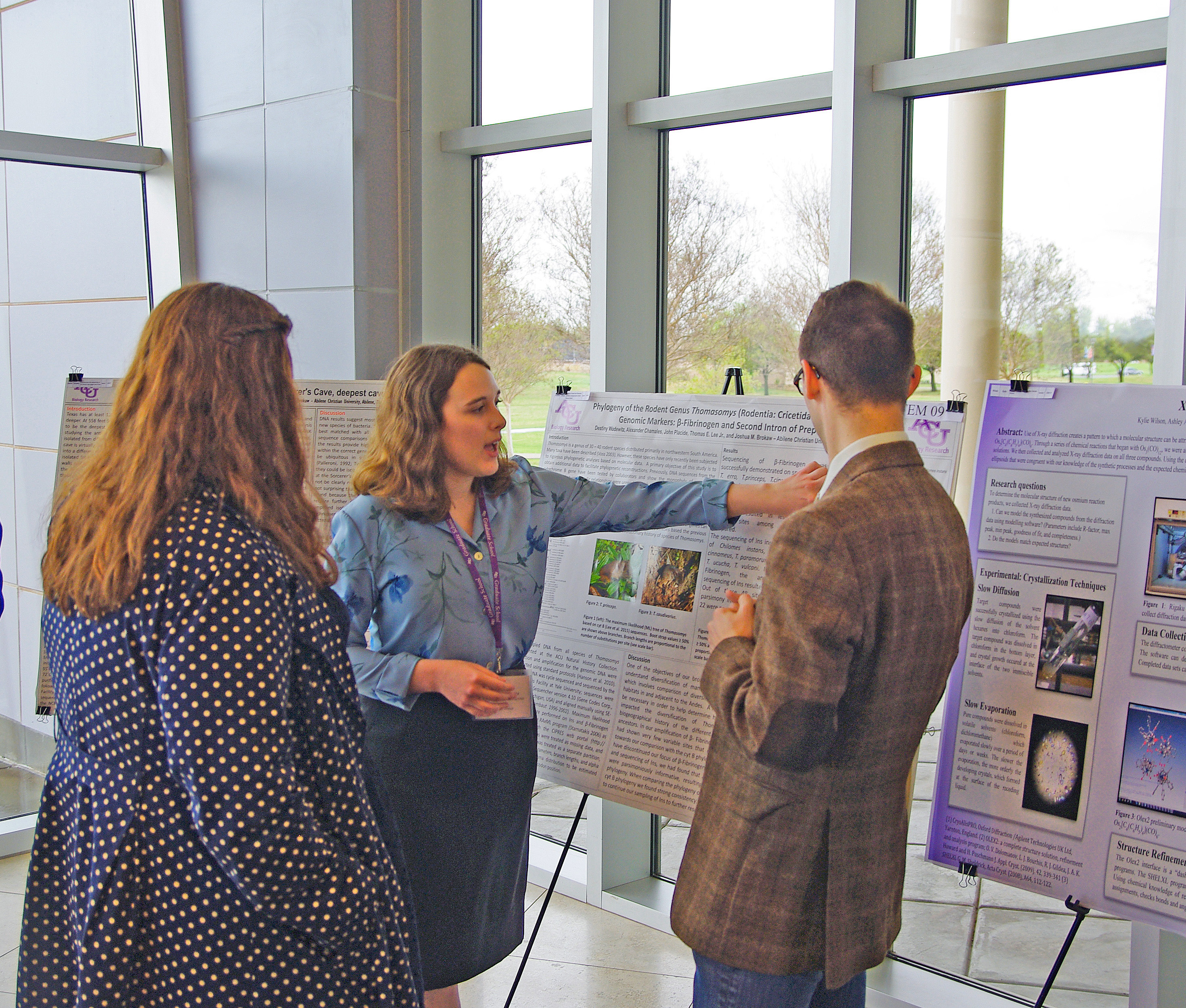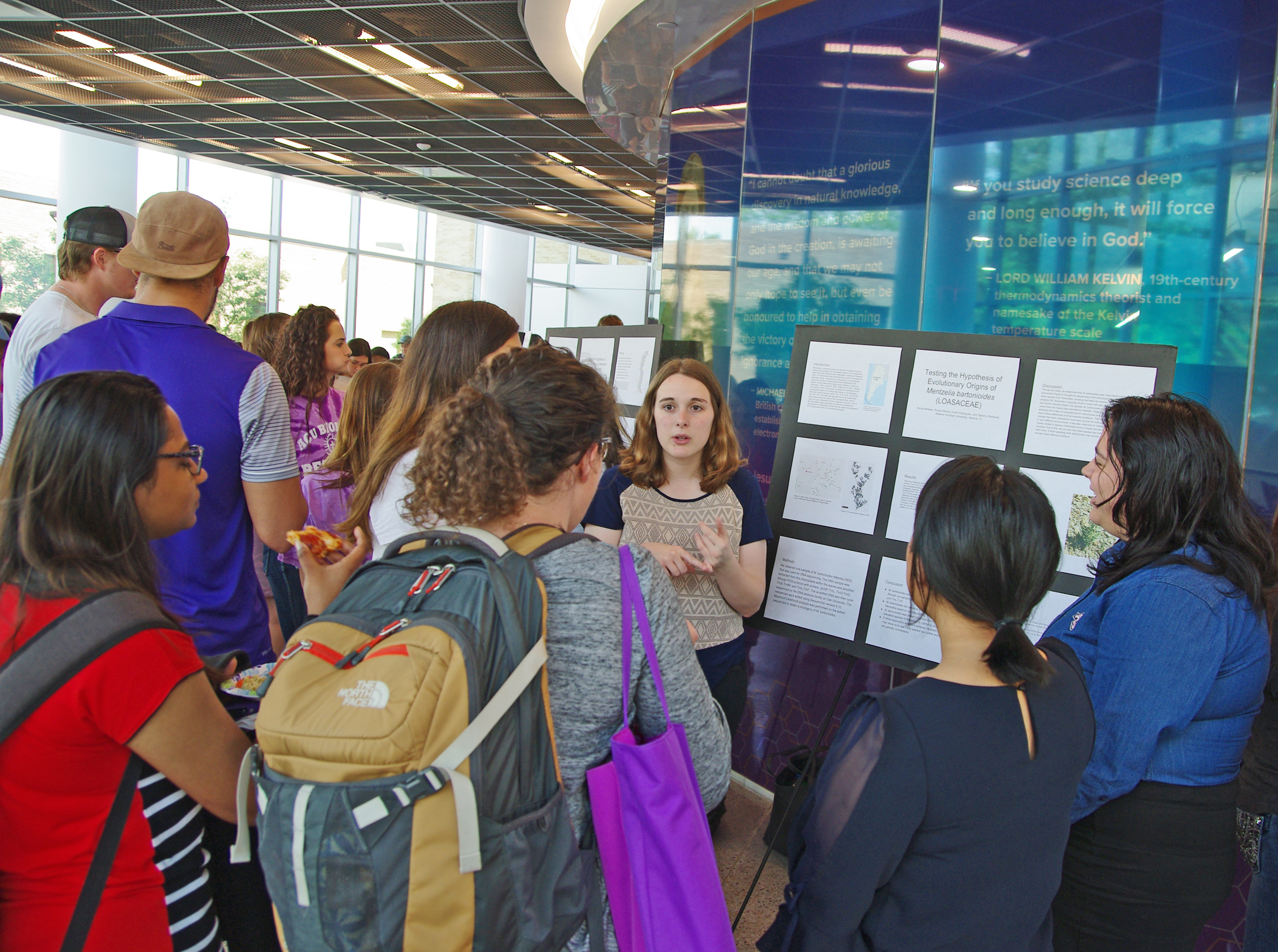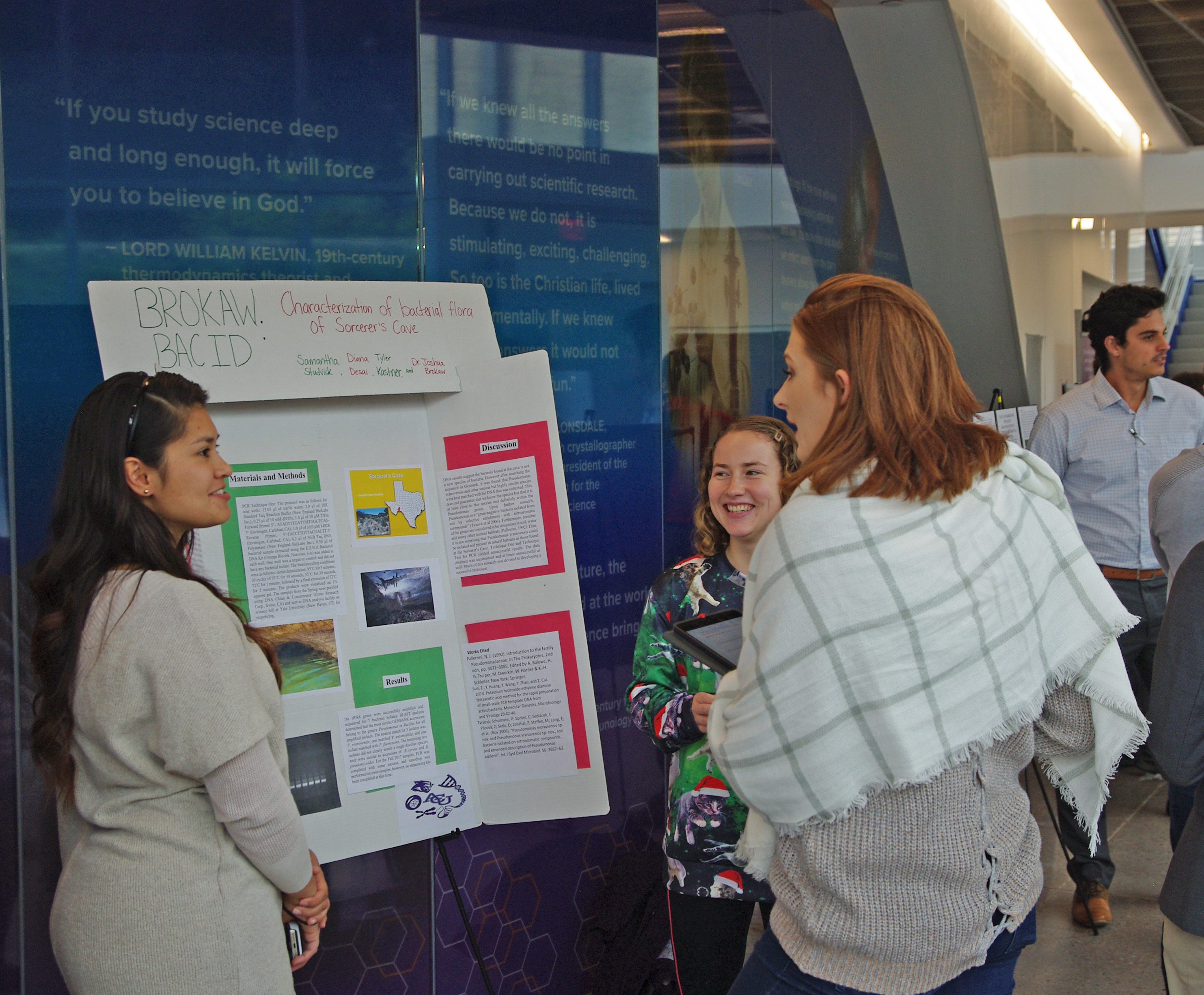Brianna Garrett
The last semestester in Biology Research has provided me with amazing experiences I will never forget. I have always been interested in working on a research project, but I did not think I had the skills or experience necessary, especially as a freshman, to be a good candidate for a team. However, when I was given the chance to join Dr. Brokaw’s research team, I knew I needed to take a leap of faith and join. As the only research I had experience with were small high school projects, I had no idea what to expect from participating in college-level research. Even though I did not know what the other side would look like, this leap paid off greatly, and I have been able to learn just as much outside of the classroom as I have learned in the classroom.
So far I have been able to focus my attention on a single project with Dr. Brokaw, where we have been working to determine the species of unidentified specimens of the plant genus Mentzelia. In order to distinguish species from one another we utilized both the physical characteristics and DNA analyses of the flower specimens. Even though I did not need to learn any new techniques to determine the morphological differences between the specimens, measuring the different flower parts helped with my own understanding of the curriculum being taught in my General Biology I course. In addition to emphasizing curriculum, I have been able to learn many different lab techniques on my journey to determine DNA differences between specimens. Techniques include the process of amplifying DNA through PCR, running a gel electrophoresis, DNA purification, and how to edit raw DNA sequence data and draw conclusions from the resulting sequences.
This new knowledge has not gone to waste, as I have been able to share my findings alongside my labmates Sophia Wagle and Mariana Castillo with the ACU community and beyond. We have had the honor of presenting our research to our peers during the Biology Research Chapel, as well as to fellow researchers at the 2020 Texas Academy of Science Conference:
Wagle, S., Garrett, B., Castillo, M. and Brokaw, J. M. “Investigating Origins of Enigmatic Populations of Mentzelia Section Trachyphytum (Loasaceae) from Western California, USA.” Annual Meetings of Texas Academy of Science, 2020, Nacogdoches, Texas.
These experiences have not only allowed me to do things outside my comfort zone, but the process of formally presenting your data to a group of people makes the entire experience even more real.
Overall, this last semester of Biology Research has given me opportunities to both learn and grow as a scientist under the direction of Dr. Brokaw. I would encourage anyone who is even slightly interested in Biology Research to entertain their curiosities and join a team. I have learned more this semester than I ever thought I would, and I am looking forward to more research experiences within the Biology Department.
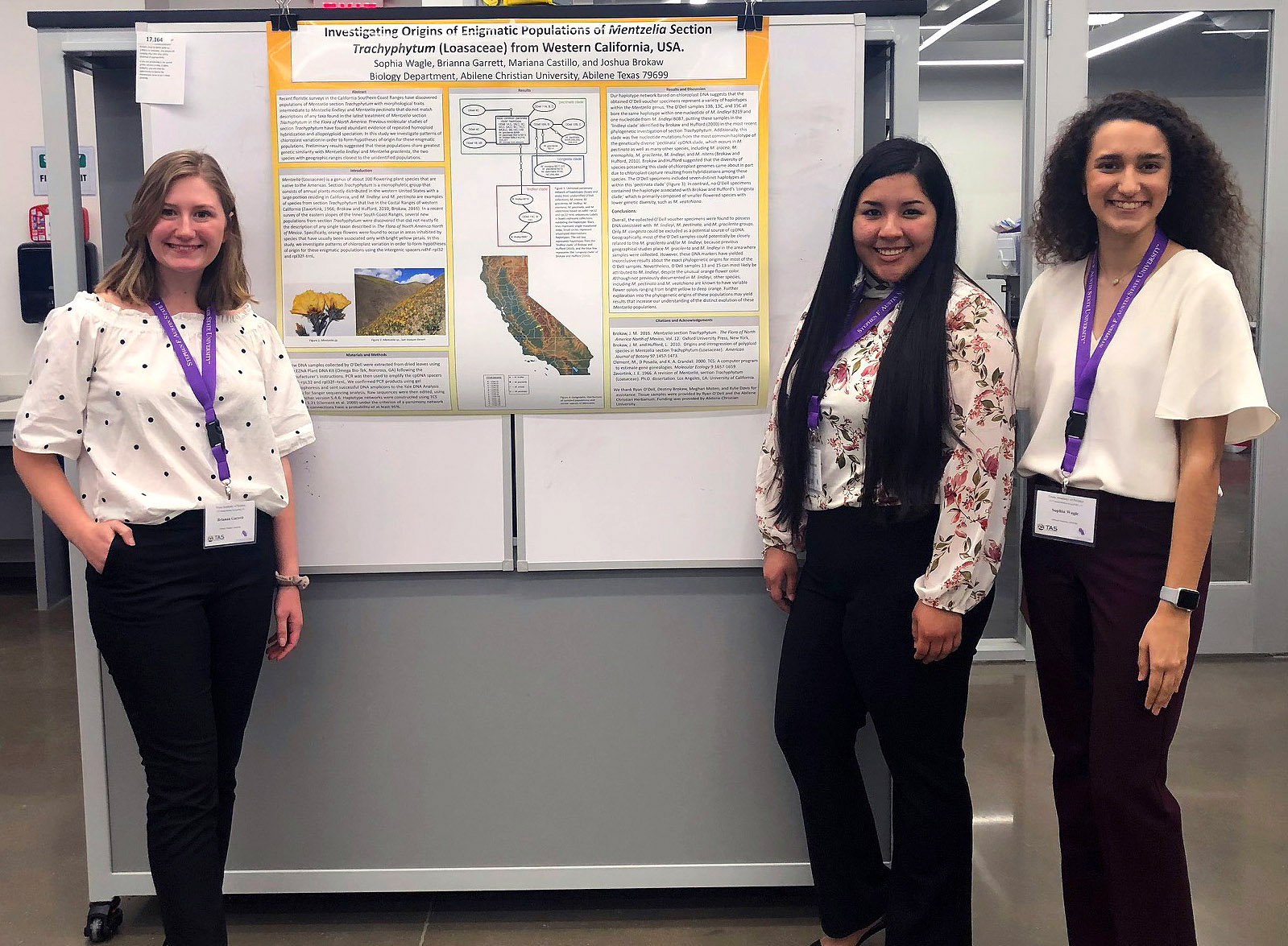
Mariana Castillo
For the past two semesters, I have been involved in Biology Research with Dr. Brokaw. These past two semesters have been an amazing experience for me in and out of the lab! I have gained so much knowledge and experience for future endeavors in Biology Research here at ACU. After attending a Research Chapel last semester, I was intrigued by the amazing opportunities that other research students have had in the past. Thankfully enough, a friend of mine who was already a part of Biology Research, had mentioned to Dr. Brokaw my interest in his research! I am beyond grateful for the opportunity that Dr. Brokaw gave me by accepting me into his research group! Over the past two semesters, Dr. Brokaw has been an excellent mentor in helping me better understand our research and allowing me to grow along the way.
So far in our research with Dr. Brokaw, I have been able to work with species of the plant genus Mentzelia from Southern California. Our research included phylogenetic reconstruction based on DNA sequences to identify unknown Mentzelia specimens. As a part of completing research, I have learned the process of amplifying DNA through PCR, gel electrophoresis, and how to edit sequencing data. This past spring semester, I was able to present our research at the Texas Academy of Science Conference, along with Sophia Wagle and Brianna Garrett. It was such an amazing experience and learning opportunity!
Working in the research lab has taught me many lessons! As a beginner in research, it was important to understand that lab techniques take practice and that not everything was going to be performed correctly the first time! Having patience with yourself and those around you was also something I learned that helped make completing the labs more successful! Being a part of research involves collaboration with other members of your research group. Although there were some unsuccessful moments in the lab, it was an overall learning opportunity for me.
I have always enjoyed being able to share information that I obtain with others. Being able to present our data, and to represent our university was an amazing experience that I hope to experience again! Over these past two semesters, my interest to be a part of Biology Research here at ACU has genuinely increased. I cannot wait for other amazing research opportunities that I may have in the future to further my learning experience.
Sophia Wagle
Coming into ACU I knew I wanted to participate in research and become experienced working in a laboratory setting. I was happy to come to ACU and find a community of individuals devoted to understanding the world around them through research. I was blessed to find Dr. Brokaw’s research team at the beginning of my freshman year. I was beyond excited to start logging hours in the lab, begin developing new skills, and understanding new aspects of science. Destiny Brokaw, our research tutor, is the first person I met when I embarked on this new experience.
Destiny was an amazing research mentor and taught me a lot of what I know today. Our research this year included looking into the phylogenetic origins of plant species in the genus Mentzelia. My research subgroup investigated the origins of populations using DNA analysis. I learned how to obtain results using PCR which amplifies the DNA of our collected samples. We also conducted a gel electrophoresis several times allowing me to practice pipetting and using lab technology. I also gained experience with presenting research when we were able to attend the Texas Academy of Sciences Research Conference.
I have grown to love the process of research and appreciate the time and effort it takes to produce results. I have also been humbled through this process because of the often disappointing results we obtained. If our gel electrophoresis did not produce bands that we could properly analyse, it would certainly remind me to be patient and practice my skills.
I am very thankful to have gained so much experience working in the Brokaw Research Lab. Working in research gave me the opportunity to learn more about the discipline of research and more about myself. The Brokaw Lab has been a great stepping stone towards greater opportunity, and I would suggest participating in research to anyone who is willing to spend the time to learn.

